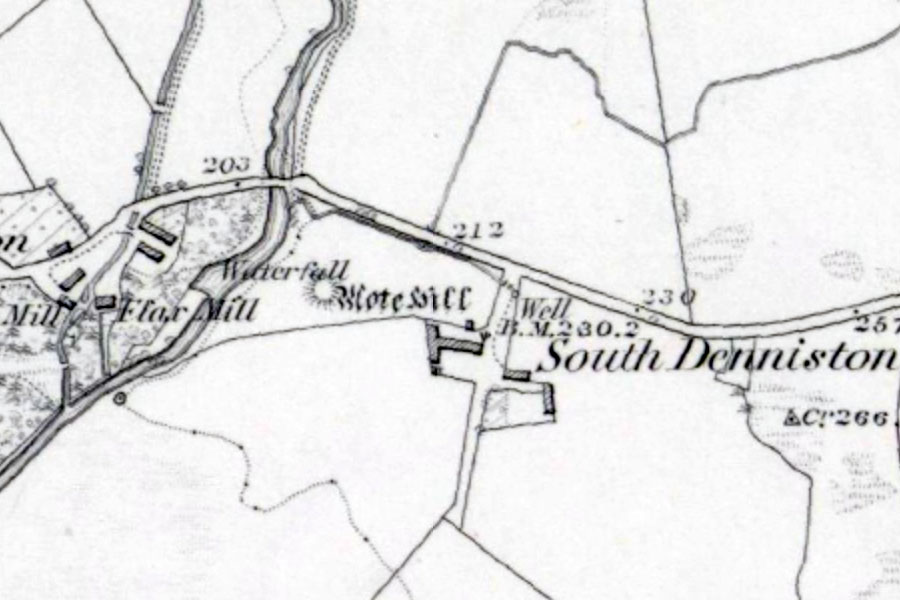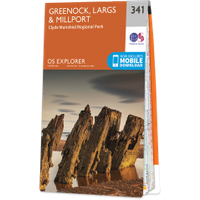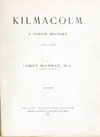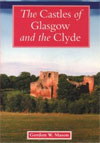

Ordnance Survey, 1863
Denniston motte, sometimes known as Milton Bridge motte or Duchal motte, stands on the banks of the Gryfe Water, a few hundred metres from Duchal House.
Due to the proximity of Duchal House it has been suggested that this motte was the predecessor of Duchal Castle. However it seems more likely that this was an early seat of the Denniston family who settled in Renfrewshire at least as early as the first quarter of the 12th century, and possibly earlier. A Ronaldus Denniston witnessed a document in 1116.
The parish of Kilmacolm was divided into the two baronies of Dennistoun and Duchal on either side of the Gryfe, of which Dennistoun was the larger. The first Dennistoun lord is said to have been called Denzil or Daniel, after whom the barony was named variously Danzielstoun or Danielstoun, later becoming Dennistoun or Denniston.
The motte measures around 4.0m in height and is almost circular with a diameter of around 24.0m. The flat top measures around 14.0m east to west by around 13.2m north to south. It stands on a slight ridge above the east bank of the Gryfe Water.
It was partially excavated in 1894 when a trench was cut across the mound from east to west, measuring around 1.2m deep across and around 1.8m deep. Around 1.2m down into the clay four rows of rough boulders were found, below which was a layer of ash measuring around 2.5 to 5.0cm thick.
In 1992 a bronze or copper jetton (a counting piece) was discovered in an erosion scar at the base of the northern side of the motte. Believed to be German in style it dates to the 15th or 16th centuries and suggests, along with the discovery of a piece of pottery, the continued use of the motte, although probably not as a defended structure.
When the motte fell out of use is unclear, however it may have been replaced by the castle which once stood at Dennistoun.
Alternative names for Denniston motte
Danielston; Danzielston; Dennistoun; Duchal motte; Duchal House; Milton Bridge motte











